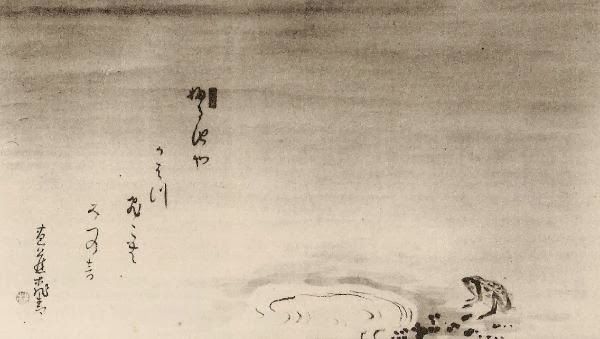 Haiga (haikai drawing) is the style of Japanese painting accompanied by a haiku. As early as in the 6th century, the Chinese try to combine paintings, calligraphy with an expression of poetry. Later during the 7th century, the late Edo period, the form of Japanese painting was more of Kano school painting, Zen painting, and often was influenced by the aesthetic values of the nanga tradition.
Haiga (haikai drawing) is the style of Japanese painting accompanied by a haiku. As early as in the 6th century, the Chinese try to combine paintings, calligraphy with an expression of poetry. Later during the 7th century, the late Edo period, the form of Japanese painting was more of Kano school painting, Zen painting, and often was influenced by the aesthetic values of the nanga tradition.
Haiga (verse-painting or visual haiku) has been developed as a combination of art and poetry together. Nonoguchi Ryūho (1595-1669), a student of Kanō Tanyū, is considered as the founder of haiga style. Yosa Buson (1716-1784) was amongst the pioneers for developing the literati art of writing haiga embedded with the aesthetic values. Western poets started using photo with haiku (photo-haiga) which is identical to that of the Japanese Shahai (photo with haiku poem).
A new dimension of the fusion emanates when the poet merges the image with the poetic expression. The assimilation needs to explore something beyond the portrayal of the image or the piece of art. This is the essence of the art of haiga (HIGH-GAH). Both image and haiku are independent entities. Art painting or photo-image has its own manifestation of aesthetic meaning. The associated haiku in the haiga should unveil the touch of layered imaginations through the art of senses like smell, touch, or sound rather than by mere narration of the image. There needs to be a reflection of creative synergy between the image and haiku. The haiku should not be too far,or not too close (fusoku – furi) from the photo. The poet needs to refrain from repeating or describing the image with the haiku. In haiga, if you paint a full moon, let the haiku be the passionate wave bridging the sublime relationship.
All haiga are to be submitted as JPG files with high-resolution photos having edging or a frame to portray a better look. The font size used for haiku should be legible with distinct clarity.
With "UtB Submission - Haiga and Visual Haiku" for the subject,
please submit up to 10 haiga and/or visual haiku as jpg file attachments to the editor.
underthebasho [at] gmail [dot] com
